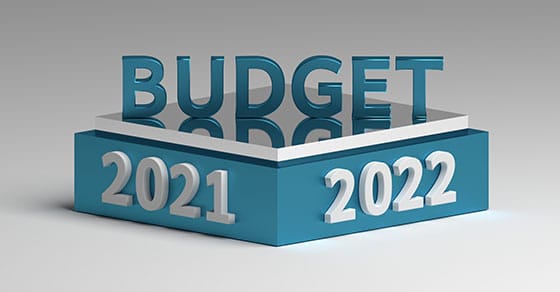
Every business should prepare an annual budget. Creating a comprehensive, realistic spending plan allows you to identify potential shortages of cash, possible constraints on your capacity to fulfill strategic objectives, and other threats.
Whether you’ve already put together a 2022 budget or still need to get on that before year end, here are four red flags to watch out for:
1. It’s based on last year’s results. Too often, companies create a budget by applying an across-the-board percentage increase to the previous year’s actual results. Clearly the pandemic showed us how an unexpected event can wreak havoc on a budget. However, even without such an event, this approach may be too simplistic in today’s complex business environment.
Historical results are a good starting point, but not all costs are fixed. Some are quite variable based on various factors, such as the supply-chain disruptions we’ve seen in 2020 and 2021. And certain assets — such as equipment and people — have capacity limitations to consider. Prepare accurate forecasts of revenue and expenses on a department-by-department basis using up-to-date technology to capture timely data.
2. It lacks companywide consensus. Your finance or accounting department shouldn’t complete the budget alone. Seek input from key employees in every department and at various levels of management.
For example, your sales department may be in the best position to estimate future revenue. A production or service manager may offer insight into unanticipated expenses or necessary investments in equipment upgrades. And the product development team can help forecast revenue and expenses related to new products and enhancements to existing products.
In addition, soliciting broad participation gives employees a sense of ownership in the budgeting process. This can help enhance employee engagement and improve your odds of achieving budgeted results.
3. It’s unrealistic. Good budgets encourage hard work to grow revenue and cut costs. But the targets must be attainable, based on your company’s history as well as economic and industry trends.
Employees will likely become discouraged if they view the budget as unachievable or out of touch with what’s actually happening on the ground. If budgets repeatedly fail, employees may start ignoring them altogether. Tying annual bonuses to the achievement of specific targets can help encourage budget buy-in.
4. It ignores or underestimates cash flow. Even if expected revenue is forecast to cover expenses for the year, production and cost fluctuations, as well as slow-paying customers and uncollectible accounts, can lead to temporary cash shortages. Of course, more significant events can have an even bigger impact.
An unexpected shortfall can seriously derail your budget. So, look beyond the income statement and balance sheet. Forecast cash flow on a weekly or monthly basis. Then create a plan for managing any anticipated shortfalls.
For example, you might need to contribute extra capital from cash reserves. Or you might need to apply for a line of credit at the bank. Alternatively, you might consider buying materials on consignment, revising payment terms with customers or delaying payments to suppliers (if a penalty won’t apply).
As you’ve no doubt experienced in 2020 and 2021, the environment in which your business operates is constantly evolving, so budgeting needs to be an ongoing process. OnTarget CPA can help you develop a reasonable annual budget and monitor actual results throughout the year.
© 2021





